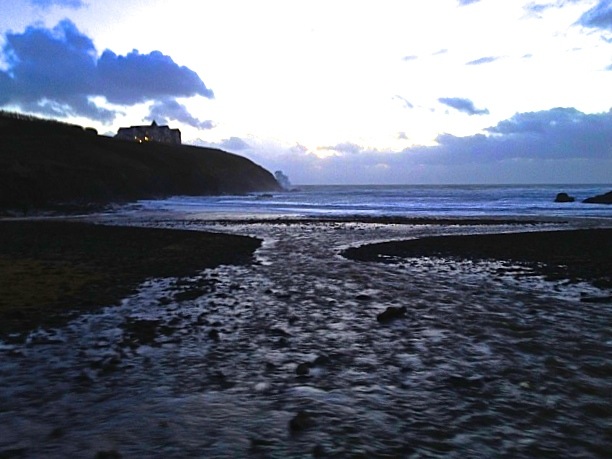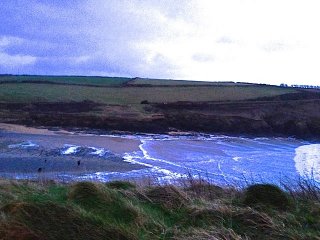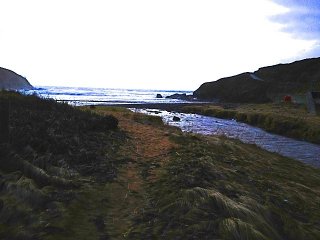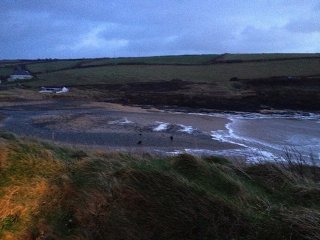Visitors to Poldhu Beach might be shocked to discover that much of the sand has disappeared following the storms and high seas at the beginning of January, unveiling a very stony beach and lots of beach litter. Thanks to Friends of Poldhu, the litter has all been removed, but it will take months, if not years, for the sand to re-appear. Fortunately, the sand hasn’t gone too far, as any local surfers will be aware, there is now a rather useful sandbar just offshore, creating a tidy right hand break.
 |
 |
 |
 |
 The rare ‘sea knot grass’ (Polygonium maritium) growing amongst the dunes
The Poldhu dunes however haven’t always been so healthy. Until the late 1980s, cars were permitted to park on the beach. In 1987, the National Trust embarked on a dune stabilisation project. With cars banned from the beach, with areas temporarily fenced off, marram grass was planted and timber posts were installed to assist with the trapping of sand.
Over 25 years later, the dunes are healthy, thriving and full of wildlife. What the recent storms have proven is that they also provide a remarkable natural sea defence, protecting the road, bridge and car park from the ravages of winter storms.
The rare ‘sea knot grass’ (Polygonium maritium) growing amongst the dunes
The Poldhu dunes however haven’t always been so healthy. Until the late 1980s, cars were permitted to park on the beach. In 1987, the National Trust embarked on a dune stabilisation project. With cars banned from the beach, with areas temporarily fenced off, marram grass was planted and timber posts were installed to assist with the trapping of sand.
Over 25 years later, the dunes are healthy, thriving and full of wildlife. What the recent storms have proven is that they also provide a remarkable natural sea defence, protecting the road, bridge and car park from the ravages of winter storms.
 A busy day on the beach (date unknown; any ideas?)
A busy day on the beach (date unknown; any ideas?)
 Sand dune restoration project (circa 1987)
Sand dune restoration project (circa 1987)
Published: Jan 2014 Author: Justin Whitehouse (Head Ranger, The Lizard)
Click here for more articles about conservation work on the Lizard.
{jcomments off}
